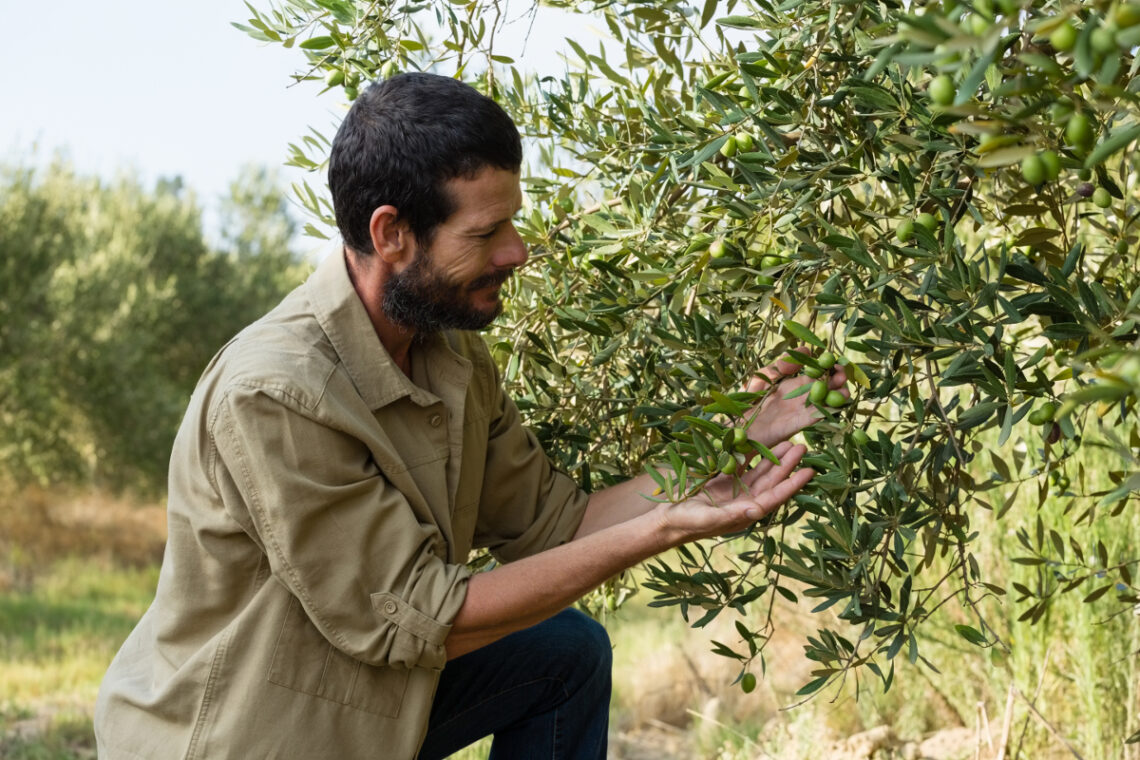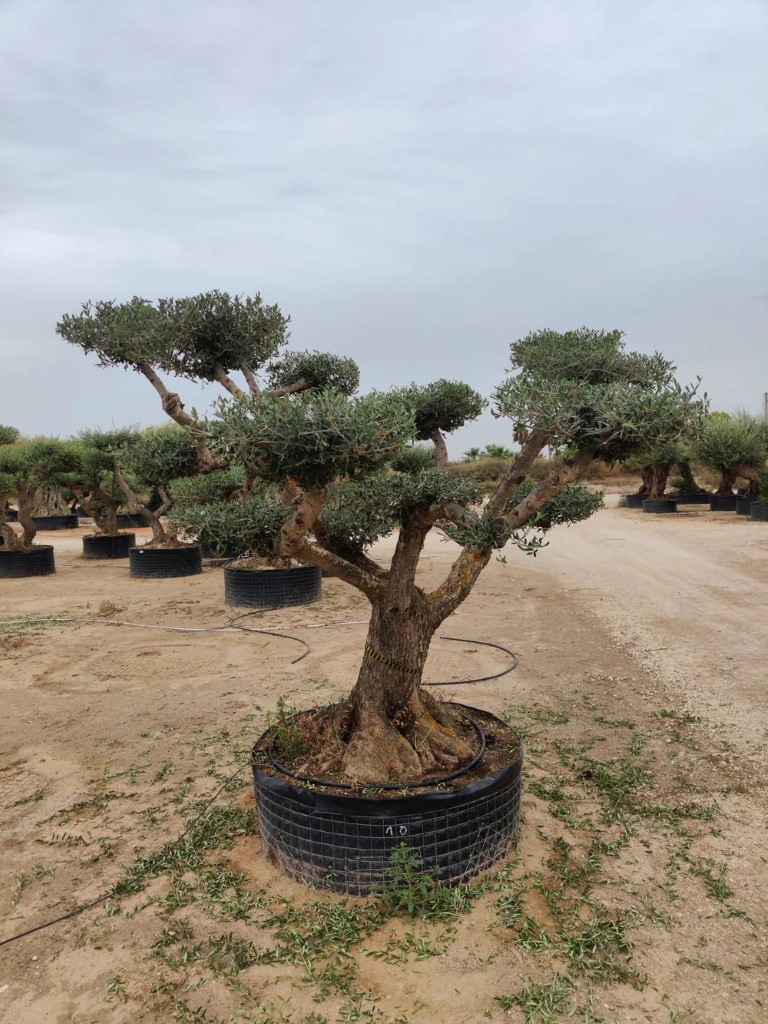Unveiling The Mysteries Of Olive Tree Canopy Size: Your Ultimate Guide To "Taille En Nuage D'Un Olivier"
Ever wondered how to master the art of olive tree pruning and canopy shaping? Let's dive deep into the world of "taille en nuage d'un olivier" and uncover everything you need to know about olive tree canopy management. Whether you're a seasoned gardener or just starting your journey, this guide will give you all the insights you need.
Picture this: you're walking through a lush olive grove, and suddenly you notice how perfectly shaped the trees are. That, my friend, is the magic of "taille en nuage d'un olivier." It's not just about cutting branches; it's an art form that combines science, tradition, and a touch of creativity. Let me break it down for you in a way that’s easy to grasp and super useful.
This guide isn't just another random blog post. It's packed with expert tips, real-world examples, and actionable advice that’ll help you transform your olive trees into works of art. So, whether you’re looking to improve fruit production, enhance tree health, or simply create a stunning landscape, we’ve got you covered. Let’s get started!
What Exactly is "Taille En Nuage D'Un Olivier"?
If you're scratching your head wondering what "taille en nuage d'un olivier" means, let me simplify it for you. It translates to "cloud pruning of an olive tree," and it refers to a specific pruning technique aimed at shaping the tree's canopy into a cloud-like form. Think of it as giving your olive tree a stylish haircut that not only looks good but also promotes healthy growth.
This technique is all about balance. It involves removing excess branches to allow sunlight to penetrate and air to circulate, which is crucial for fruit production. Plus, it gives your trees that picturesque, rounded appearance that’s both functional and aesthetically pleasing.
Why Should You Care About Olive Tree Canopy Size?
Let’s talk about why canopy size matters. For starters, a well-managed canopy improves fruit yield and quality. It reduces the risk of diseases by enhancing air circulation and sunlight exposure. Plus, it makes harvesting a whole lot easier.
But here's the kicker: maintaining the right canopy size also affects the overall health and longevity of your olive trees. It's like giving your trees a regular workout to keep them strong and vibrant. And let's not forget, a neatly pruned olive grove is a sight to behold.
The Science Behind Olive Tree Pruning
Pruning isn't just about hacking away at random branches. There's actual science involved. When you prune an olive tree, you're stimulating new growth by removing old, unproductive wood. This process encourages the tree to focus its energy on producing healthy, fruitful branches.
Studies show that properly pruned trees can yield up to 20% more fruit compared to neglected ones. That’s a significant difference, especially if you're growing olives commercially. So, if you're serious about maximizing your harvest, pruning is non-negotiable.
Step-by-Step Guide to Cloud Pruning Your Olive Trees
Now that you understand the importance of "taille en nuage d'un olivier," let’s walk through the steps to achieve that perfect cloud shape.
- Step 1: Timing is Everything – The best time to prune olive trees is late winter or early spring, just before new growth begins.
- Step 2: Gather Your Tools – You’ll need a sharp pair of pruning shears, loppers, and possibly a saw for larger branches.
- Step 3: Start with Deadwood – Begin by removing any dead, diseased, or damaged branches. These are easy to spot as they’ll be dry and brittle.
- Step 4: Thin Out the Canopy – Remove excess branches to allow sunlight and air to penetrate. Focus on creating an open center for maximum exposure.
- Step 5: Shape the Cloud – Trim the remaining branches to form a rounded, cloud-like shape. Aim for a balanced, symmetrical appearance.
Tips for Beginners
If you're new to pruning, don't worry. Here are a few tips to help you get started:
- Take your time and don't rush the process.
- Always make clean cuts to prevent damage to the tree.
- Dispose of pruned branches properly to avoid spreading diseases.
Common Mistakes to Avoid
Pruning can be tricky if you don’t know what you're doing. Here are some common mistakes to avoid:
- Cutting too much – Over-pruning can weaken the tree and reduce fruit production.
- Pruning at the wrong time – Timing is crucial, so stick to the recommended pruning season.
- Using dull tools – Dull tools can damage the tree and make the process more difficult.
How to Fix Pruning Mistakes
Mistakes happen, but the good news is they can often be corrected. If you’ve over-pruned a tree, give it time to recover. Apply a balanced fertilizer to help stimulate new growth, and avoid further pruning until the tree has regained its strength.
Tools You Need for Successful Pruning
Having the right tools makes all the difference. Here's a list of essential pruning tools:
- Pruning shears – Ideal for small branches.
- Loppers – Great for thicker branches.
- Saw – Necessary for large branches.
- Gloves – Protect your hands from thorns and sharp edges.
Investing in quality tools will make the pruning process easier and more efficient. Plus, they’ll last longer if properly maintained.
Maintaining Your Tools
Regular maintenance is key to keeping your tools in top condition. Clean them after each use, sharpen the blades periodically, and store them in a dry place to prevent rust.
Benefits of Proper Canopy Management
Proper canopy management offers numerous benefits, including:
- Increased fruit yield and quality.
- Improved tree health and longevity.
- Enhanced aesthetic appeal.
- Easier harvesting.
By mastering "taille en nuage d'un olivier," you'll unlock the full potential of your olive trees and enjoy a bountiful harvest year after year.
Long-Term Impact on Tree Health
Consistent pruning not only boosts fruit production but also strengthens the tree’s immune system. Healthy trees are less susceptible to pests and diseases, which means fewer headaches for you in the long run.
Expert Insights and Best Practices
To give you a deeper understanding, let’s hear from the experts. According to the International Olive Council, regular pruning is one of the most effective ways to maintain healthy olive trees. They recommend pruning annually to ensure optimal tree health and productivity.
Additionally, research from agricultural universities highlights the importance of tailored pruning techniques based on the specific needs of each tree. This personalized approach ensures that every tree receives the care it deserves.
Case Studies and Success Stories
Many olive farmers have seen remarkable improvements in their crops after adopting "taille en nuage d'un olivier." For instance, a farmer in Provence reported a 25% increase in fruit yield after implementing this technique. These success stories are a testament to the effectiveness of cloud pruning.
Conclusion: Take Action Today
In conclusion, mastering "taille en nuage d'un olivier" is essential for anyone serious about olive tree cultivation. By following the steps outlined in this guide, you'll be well on your way to creating a thriving olive grove.
So, what are you waiting for? Grab your tools and start pruning. And don’t forget to share your experiences and results in the comments below. Your journey to becoming an olive tree expert begins now!
Table of Contents
- What Exactly is "Taille En Nuage D'Un Olivier"?
- Why Should You Care About Olive Tree Canopy Size?
- The Science Behind Olive Tree Pruning
- Step-by-Step Guide to Cloud Pruning Your Olive Trees
- Tips for Beginners
- Common Mistakes to Avoid
- How to Fix Pruning Mistakes
- Tools You Need for Successful Pruning
- Maintaining Your Tools
- Benefits of Proper Canopy Management
- Long-Term Impact on Tree Health
- Expert Insights and Best Practices
- Case Studies and Success Stories
- Conclusion: Take Action Today

Comment tailler un olivier en nuage et quand faire la taille

Comment tailler un olivier en nuage conseils et astuces

Comment tailler un olivier en nuage conseils et astuces